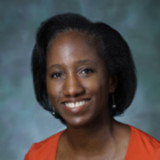What a year it has been! 2020! Anesthesiology 2020! Which should I say first? Both 2020 and Anesthesiology speak volumes on their own. However, I was asked to write about the Anesthesiology annual meeting; so, I will stick with Anesthesiology 2020. When last we connected, it was October 2019. I think my final statement went like this: “I am looking forward to Anesthesiology 2020 and hope to see you in Washington, DC.” Well, as we all know, the universe had other plans.
As I did last year, my first interview was with Dr. Meg Rosenblatt, an advisor and friend. This year she was actually the Chair of the Meeting Oversight Committee, and last year’s fabulous meeting was accomplished by the amazing Dr. Joy Hawkins. I learned from Dr. Rosenblatt that the annual meeting is well-planned by January of the upcoming year. This means that Anesthesiology 2020 (ASA 2020) was mostly done by January 2020. In the ensuing months, no one would have imagined what actually happened. COVID-19 smacked us in the face, and by March 2020 we were licking our wounds. Even so, if you were like me, outside of New York, I can honestly say that I did not really appreciate the extent of the damage to ASA 2020, as we had come to know this venue in past years. However, Dr. Rosenblatt had a bird’s eye view. As Chair of the Department of Anesthesiology at Mount Sinai West and Morningside and Professor of Anesthesiology, Perioperative and Pain Medicine, and Professor of Orthopedics, she made the following observation: “Looking out of my window I could see the refrigerated morgue and knew that we were in the fight for our lives.” Even so, Dr. Rosenblatt said that she was still cautiously hopeful about the annual meeting.
By May 2020, it was clear that ASA 2020 would be at least half virtual. Dr. Mary Dale Peterson, our ASA President, made the call. Shortly thereafte,r the half virtual idea became fully virtual. Even so, the elephant in the room was the hours of programming at a non-virtual meeting. Another challenge was that only around 34% of what was accepted would be presented. If that wasn’t enough, it was clear that virtual ASA 2020 needed a company that could handle its vast presentation platform. What was an oversight chair to do?
Dr. Rosenblatt then went back to the Leadership and the Track Chairs in order to gain consensus about a venue host and about would be presented at the now fully virtual ASA 2020. Through their discussions, they limited each presenter to one presentation and because we are an academic society, they assured that all accepted abstracts and/or presentations were still part of the presenter’s Curriculum Vitae, even though they may not be presented at ASA 2020. The venue host was selected. Yet, there was another obstacle to tame: The time zone challenge. Fortunately, by this time our meeting organizers and ASA Leadership team had become ASA 2020 ninja warriors and the buzzer was well within view!
As they held their breath, the meeting began on October 2. The welcome session was led by Drs. Rosenblatt and Peterson and guest speakers Dr. Jerome Adams, an anesthesiologist and our Surgeon General, who provided an update on the pandemic, and Dr. Helge Braun, Germany’s Head of the Chancellery and Federal minster for Special Affairs, who discussed leadership during COVID-19 in Germany. As always, the special sessions did not disappoint. On Saturday, there was a special session with three main speakers: Dr. Francis Collins, the director of the National Institutes of Health, who provided a Keynote Session on “Exceptional Opportunities in Biomedical Research” with a focus on addiction; Dr. Deborah Birx, who provided a commentary on the role of the ASA as first responders to the pandemic; and Dr. Mary Dale Peterson, who provided her personal and professional memories from a memorable year.
For the remaining days of the weekend, we experienced our virtual named lectures. Dr. Matthew Weinger challenged us in the Ellison C. Pierce Lecture where he presented his thoughts titled: Is Safety Becoming the Poor Stepchild of Quality? Dr. Tony Yaksh gave an insightful FAER-Helrich Research Lecture discussing the challenges of investigating pain mechanisms. Dr. Joanne Conroy provided a moving Emery A. Rovenstine Memorial Lecture encouraging us to transform our anesthesia practice. Dr. Beverley Orser addressed Translational Science in the John W. Severinghaus Lecture. Dr. Christine Ball reminded us of our global roots in Anesthesiology in the Wood Library History of Anesthesiology Lecture, and Dr. P. Allan Klock, Jr. discussed the art and science of airway management in the Society for Airway Management-Ovassapian Lecture.
In my opinion, the Cinderella stories of virtual ASA 2020 were threefold: the heroic efforts to engage young faculty, the attention to COVID-19, and the focus on leadership! There were three FAER/Early Stage Anesthesia Scholars sessions. Not really knowing how they pulled this off in such a short time span, I spoke to Dr. Jim Eisenach, the President of FAER. He related that there were good things such as direct connections to the users, the flexibility of the Academy of Research Mentors in Anesthesiology, and although Zoom was informal, it allowed access to panels, such as the FAER panel on diversity, and it kept everyone on time. He also related that although the virtual experiences had mixed results likely because of concurrences, the FAER-Mentored Research Training Grant Session was well-received.
All of the meeting organizers agreed that the importance of networking was not to be overlooked. We also agree that we likely never return to exactly the way the annual meeting was done in 2019. ASA 2020 left a mark. For example, panels may be better virtual with questions and answers live at a later time. Department receptions seem like fluff but they serve an important role in making connections and outreach. So, we all have to wait and see what happens. Dare I say, see you in San Diego for ASA 2021!
Dolores B. Njoku, MD is an Associate Professor in Anesthesiology and Critical Care Medicine, Pediatrics, and Pathology at Johns Hopkins University. She also serves as the ASA liaison to the American Society of Ultrasound in Medicine, the Chair of Grants Management tor the Foundation for Anesthesia Education and Research, and the Secretary of the Association of University Anesthesiologists. She reports no conflicts of interest.






